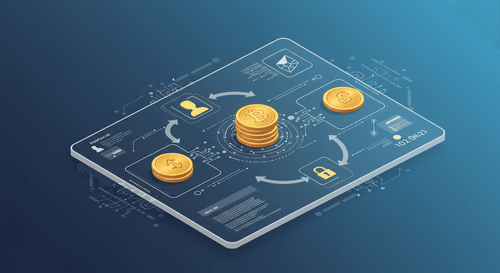
When collateral drops, the clock starts. In centralized finance you get people, notices, and a grace period to fix it. In decentralized finance the contract enforces the rules on-chain. The math is similar. The experience is not.
How margin calls are determined
A margin call is triggered when your loan-to-value crosses a preset line. LTV is the loan amount divided by the current value of pledged collateral. When LTV rises above the program’s maintenance level, the lender or protocol asks you to restore coverage.
What drives the trigger
1) Price Source
- CeFi: the lender averages prices from several exchanges on a schedule, which smooths odd ticks but can react slowly during sharp moves.
- DeFi: the contract reads on-chain oracles almost continuously and updates positions block by block, so you see changes faster and feel more volatility.
2) Thresholds (LTV levels)
Programs define an origination LTV and a lower maintenance LTV. Margin calls key off the maintenance level, not the headline advance rate. When current LTV rises above maintenance, a call is triggered.
3) Timing rules
- CeFi: you get a defined grace period to cure, typically up to 72 hours, to add collateral or pay down principal.
- DeFi: there is no discretionary window. Once the parameter is breached, the position becomes eligible for liquidation immediately per the contract.
What to confirm before borrowing
- The exact maintenance LTV and how it’s calculated.
- The price feeds used and how often they update.
- The grace period length (if any), how notices are delivered, and which cure methods are accepted.
What happens when a margin call is triggered?
A margin call is a request to restore coverage after a breach of the loan-to-value threshold. In CeFi, thresholds are set in your agreement. When breached, the lender sends a notice and gives a grace period, often up to 72 hours, to add collateral or pay down principal. You get emails or texts, a portal update, and a human you can call to confirm amounts and deadlines. Act in time, and liquidation is usually avoided.
In DeFi, the threshold is a hard line. Once crossed, the position becomes eligible for liquidation per the contract. Alerts surface as on-chain events or app prompts. There is no discretionary window or back-and-forth.
How to prepare before a margin call
In CeFi, know the protocol before you borrow: the LTV trigger, how notices are sent, the length of the grace period, whether weekends count, the cure methods allowed, and how liquidation is priced. Have logistics ready. Decide which assets you will use to cure, where they sit, and how long transfers take. Set price and LTV alerts that reach you by text and email. Keep wire instructions and wallet details on file. After any cure, get written confirmation that coverage is restored.
In DeFi, assume no grace period. Use fast alerts, keep funds you can move at once, and factor in network congestion and gas spikes. If you cannot act in minutes, size positions so they are less likely to breach during intraday volatility.
Liquidation and associated fees
If a cure does not happen, liquidation is the backstop. In CeFi, the lender sells pledged assets according to program rules. Costs are spelled out in your documents and can include stated fees and market impact if sales are large or conditions are thin. Ask how execution works in calm and volatile periods.
In DeFi, liquidators repay part of your debt and seize collateral at a protocol-set discount. Your cost includes the penalty, network fees, and any slippage during execution. The process is fast and predictable inside the ruleset. Model worst-case costs using the fee schedules or protocol parameters, not just the headline APR.
What to consider when choosing a lender
Choose CeFi for larger tickets, property-linked financing, or any situation where hours or days matter. A crypto mortgage or sizable crypto-backed loan benefits from human contact and a defined window to act. Choose DeFi for permissionless access and immediate enforcement, best for smaller positions you watch closely and can top up from a wallet.
Bottom line A margin call always means the same thing: restore coverage when collateral falls. What changes is cadence and control. CeFi gives you a grace period and a person to call. DeFi gives you determinism and speed. Pick the model that matches how fast you can act, then build alerts, funding, and a one-page playbook around that choice.
The opinions expressed in the Blog are for general informational purposes only and are not intended to provide specific advice or recommendations for any individual or on any specific security or investment product.
Author
Subscribe to our newsletter
Actual crypto success stories and strategies straight to your inbox.



